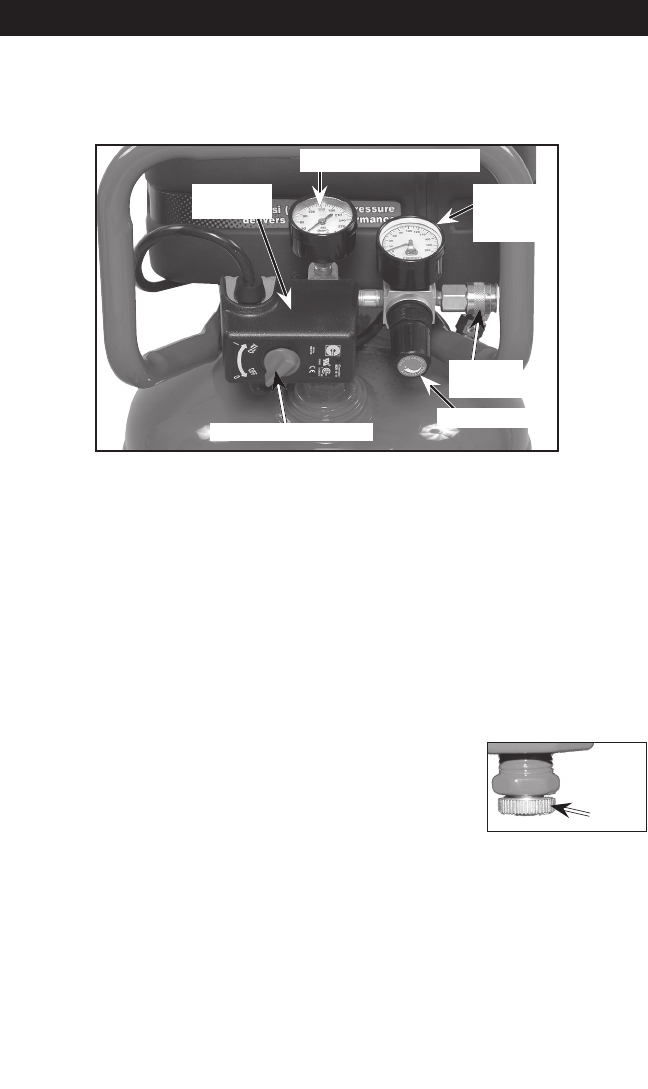
12- ENG
Controls the air pressure
shown on the outlet pressure gauge.
Pull the knob out and turn clockwise
to increase pressure and counterclock-
wisetodecreasepressure.Whenthe
desired pressure is reached push knob
in to lock in place.
The
universal quick-connect body accepts
the three most popular styles of quick-
connect plugs: Industrial, automotive
(Tru-flate), and ARO. One hand push-
to-connect operation makes connec-
tions simple and easy.
Valve
The drain valve is
located at the
base of the air
tank and is used
to drain conden-
sation at the end of each use.
This
compressor contains an advanced
design cooling system. At the heart of
this cooling system is an engineered
fan. It is perfectly normal for this fan to
blow air through the vent holes in large
amounts. You know that the cooling
system is working when air is being
expelled.
READTHISOWNER’SMANUALANDSAFETYRULESBEFOREOPERATING
YOUR UNIT. Compare the illustrations with your unit to familiarize yourself with
thelocationofvariouscontrolsandadjustments.Savethismanualforfuture
reference.
Become familiar with these controls
before operating the unit.
Turn this
switch "Auto (I)" to provide automatic
power to the pressure switch and
"Off (O)" to remove power at the end
of each use.
The pressure switch
automatically starts the motor when
the air tank pressure drops below the
factory set "cut-in" pressure. It stops
the motor when the air tank pressure
reaches the factory set "cut-out" pres-
sure.
If the pressure switch
does not shut off the air compressor
at its "cut-out" pressure setting, the
safety valve will protect against high
pressure by "popping out" at its fac-
tory set pressure (slightly higher than
the pressure switch "cut-out" setting).
The outlet
pressure gauge indicates the air pres-
sure available at the outlet side of the
regulator. This pressure is controlled
by the regulator and is always less
than or equal to the tank pressure.
The tank pres-
sure gauge indicates the reserve air
pressure in the tank.
Outlet
Pressure
Pressure


















